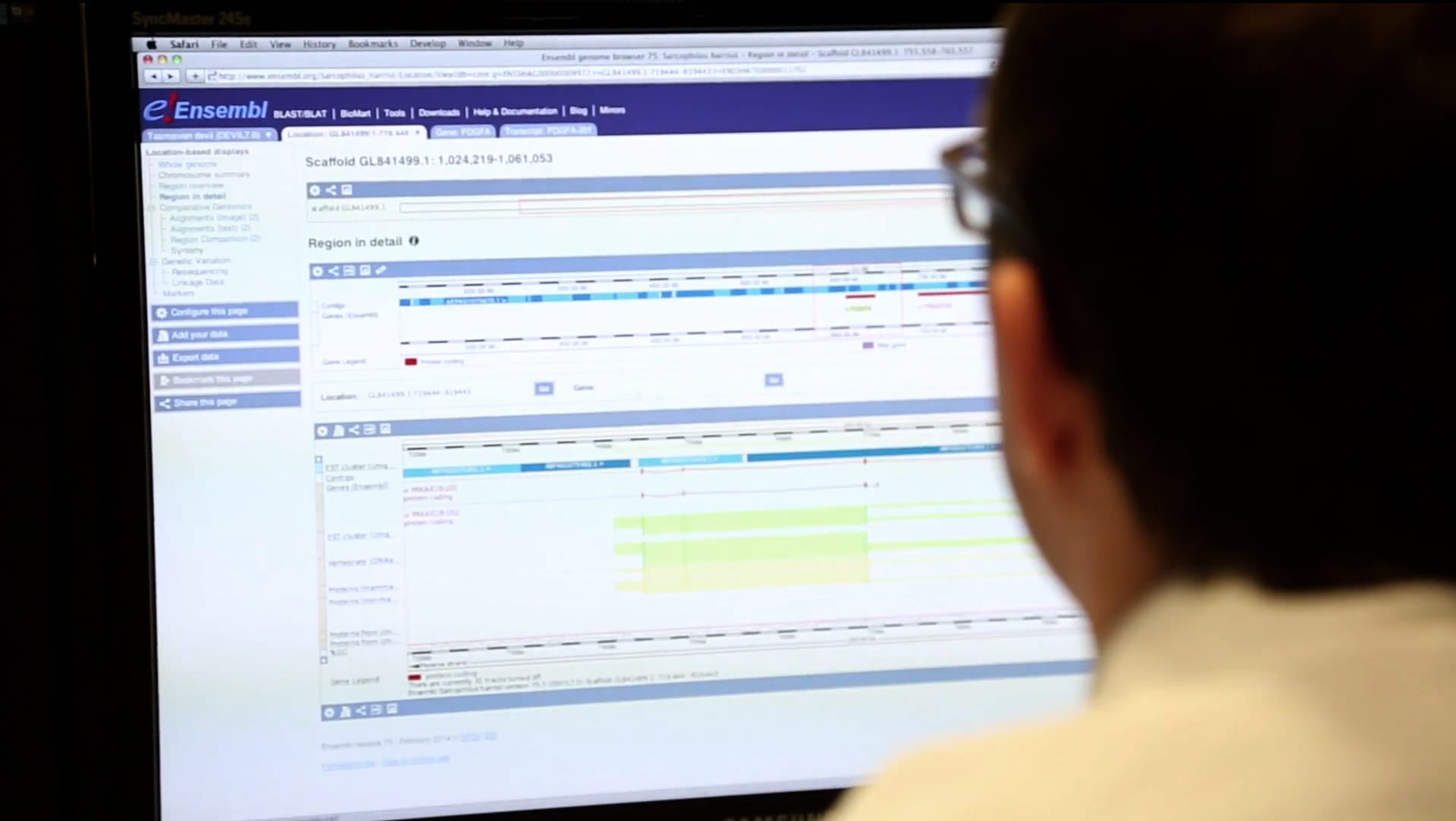Timeline: how has the Human Genome Project been used?

What’s happened since the Human Genome Project finished in 2003?
Key terms
Genome
The complete set of genetic instructions required to build and maintain an organism.
DNA sequencing
The process of determining the order of bases in a section of DNA.
The sequence of any two people is 99.5% identical. The remaining 0.5% might not sound like much – but represents 15 million bases. Variations between people’s genomes can significantly impact their characteristics, appearance, and their risk of certain conditions.
Many projects have been set up since the Human Genome Project finished in 2003, using the blueprint genome sequence to better understand more about how our unique genomes affect our health, the development of medical conditions and who we are.
Read about some of them below.
Timeline: How has the Human Genome Project been used?
Genome Browsers
Aim: to find a new way to access and search the genomes of different species
The Human Genome Project created vast amounts of data, and required new ways to store, visualise and interact with the information. New genome browsers such as Ensembl (like a ‘Google for the genome’) offered a new way to access and search the genomes of different species.
The International HapMap Project
Aim: to develop a haplotype map (a HapMap) of the human genome, describing common patterns of variation.
A haplotype is the physical grouping of genomic variations in blocks. Mapping where these blocks are located on our chromosomes can identify key areas of genetic variation.
HapMap launched in 2002 and, in 2005, published a haplotype map of the common patterns of variation in humans – including where they occur on the genome and how they are distributed in diverse populations around the world.
The catalogue made it much easier to establish connections between specific genes and disease. Scientists have since unlocked information about the genetics underlying common conditions, like cancer, diabetes, heart disease and asthma.
The launch of UK10K
Aim: analyse the DNA of every 1 in 6,000 people in the UK
UK10K set out to compare the genomes of 4,000 healthy people with those of 6,000 people living with a disease of suspected genetic cause.
The project has uncovered rare genetic variants that are important in human genetic conditions. For example, results published in 2015 identified genetic variants with links to cholesterol levels and bone health.
Scientists hope that information like this will advance our understanding of disease biology, eventually leading to improved treatments.
ENCODE (the Encyclopaedia of DNA Elements)
Aim: to identify and characterise all functional parts of the genome
ENCODE launched in 2003 with a pilot study, bringing together hundreds of experts from different fields to work out the right way to approach their aim.
In 2012, the project team published their encyclopaedia of genetic data – described as an “operating manual for the human genome”. This massive resource has yielded important insights about gene regulation, evolution and disease.
The project confirmed that we have around 20,600 protein-coding genes and identified a further 9,000 genes with important roles in out cells. It also revealed that around 80% of our genome that was previously considered ‘junk DNA’ is actually functional – it just doesn’t necessarily code for a protein.
The 100,000 Genomes Project
Aim: sequence 100,000 genomes to understand the role our genes play in health and disease
The 100,000 Genomes Project set out to sequence genomes from patients and their families affected by rare diseases and common cancers, looking for genetic variations that may underpin the disease.
The project proved the value that could come if we made genomics a routine part of healthcare. For example, using whole genome sequencing in one study led to a new diagnosis in 1 in 4 people that might otherwise have been missed. This paves the way to more personalised treatments for patients, ensuring they are matched to the best available treatment option.
The project also provided a set of reference genomes which were used during the Covid-19 pandemic to understand the impact of the disease on our genomes.
The remaining 8%
Aim: complete the full 100% of the human genome
The Human Genome Project set out to read and record the entire human genome sequence. It achieved more than 92% of the genome – as much as was technologically possible at the time.
Various projects have slowly filled up the missing 8%, with the complete sequence published in 2022.